| 1895 |
Inaugural year
Otani Takejiro becomes the shiuchi (entertainment promoter) of Shinkyōgoku Sakaiza Theatre in Kyoto
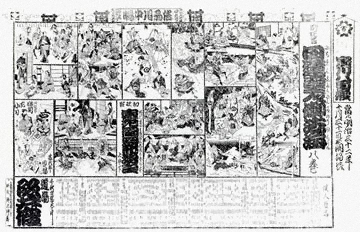 |
|---|---|
| 1902 | An article on the work of Shirai Matsujiro and Otani Takejiro is published in the Osaka Asahi Shimbun newspaper as “The New Year of Matsu and Take,” taken from the brothers’ names; the brothers soon establish the Matsu Take Goshi Kaisha, a limited partnership company, later the Matsu Take Gomei Kaisha, a general partnership company (both matsu, “pine tree,” and take, “bamboo,” are considered good luck) |
| 1906 | The first production in earnest at the Nakaza Theatre in Osaka, then the rest of the five theatres on Dotonbori are brought under direct management, one by one |
| 1909 | Bunrakuza Theatre is brought under direct management, taking over production of ningyo-jōruri (traditional puppet plays) |
| 1910 | Shintomiza Theatre is acquired; business is expanded to Tokyo |
| 1911 | Matsu Take Gomei Kaisha is renamed Matsu Take Gomei Sha |
| 1913 | First production by Shochiku at the Kabukiza Theatre |
| 1914 |
Kabukiza Theatre is brought under direct management, then theatres in Tokyo, one by one
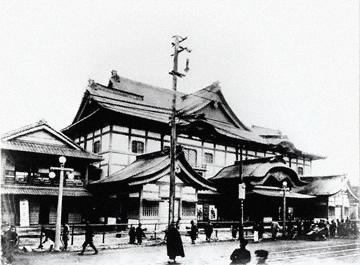 The second Kabukiza Theatre (during the Taisho period)
|
| Established 1920 |
Shochiku Kinema Gomei Sha is established
Kamata Studio is opened in Tokyo Shochiku Kinema Kenkyujo (Shochiku cinema laboratory) is established Foreign films are imported and screened at Shochiku theatres 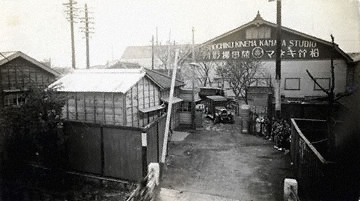 Kamata Studio (1925)
|
| 1921 |
Teikoku Katsudo Shashin Kaubushiki Kaisha is acquired by Shochiku Kinema Gomei Sha and renamed Shochiku Kinema Kabushiki Kaisha |
| 1922 | Shochiku Gakugekibu Seito Youseijo, a school for training in musical theatre, is established at a branch of Matsu Take Gomei Sha |
| 1923 | Osaka Shochikuza Theatre (Dotonbori Shochikuza Theatre) is opened; Shochiku Gakugekibu’s first performance of Aruru no onna (L’Arlésienne) |
| 1924 | Shochiku Kinema Kabushiki Kaisha is listed on Tokyo Stock Exchange Co., Ltd. and Osaka Stock Exchange Co., Ltd. |
| Established 1920 |
<Motion picture>
Shima no Onna (original Japanese title) is released: Shochiku Kinema’s inaugural picture
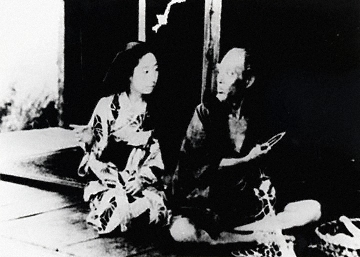 Shima no Onna(1920)©️松竹
|
|---|---|
| 1921 | <Motion picture> |
| 1925 | The third Kabukiza Theatre is reconstructed and reopened |
|---|---|
| 1926 | Shochiku head office is moved to Shintomicho |
| 1927 | Otani Takejiro is bestowed the Ordre des Palmes académiques (Order of Academic Palms), bestowed to persons who have contributed to French education and culture, in the grade of Officier (Officer) |
| 1928 | Asakusa Shochikuza Theatre is reestablished as a movie theatre playing first runs of foreign films |
| 1929 | Matsu Take Gomei Sha Osaka Office is dissolved; Shochiku Tochi Tatemono Kogyo Kabushiki Kaisha is established |
| 1930 |
Tokyo Gekijo Theatre is built and opened
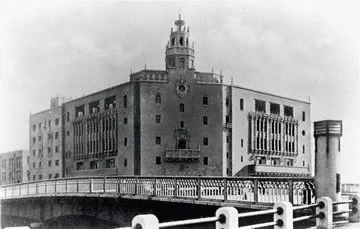 Tokyo Gekijo Theatre
|
| 1931 | Shochiku Kogyo Kabushiki Kaisha is merged into Shochiku Tochi Tatemono Kogyo Kabushiki Kaisha and renamed Shochiku Kogyo Kabushiki Kaisha |
| 1932 | Tokyo Shochiku Gakugekibu is renamed Shochiku Shojo Kagekibu (SSK) |
| 1933 | Shochiku Shojo Kagekibu is dissolved; Shochiku Shojo Kagekidan (SSK) is established |
| 1934 | Osaka Shochiku Gakugekibu is renamed Osaka Shochiku Shojo Kagekidan (OSSK) |
| 1936 | Ofuna Studio is opened in Kanagawa; Kamata Studio is closed
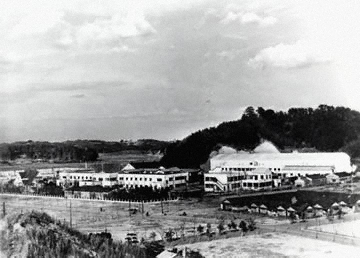 Ofuna Studio
|
| 1937 |
Shochiku Kogyo Kabushiki Kaisha and Shochiku Kinema Kabushiki Kaisha merge; Shochiku Co., Ltd. is established
Asakusa Kokusai Theatre is opened; the first production is by Shochiku Shojo Kagekidan 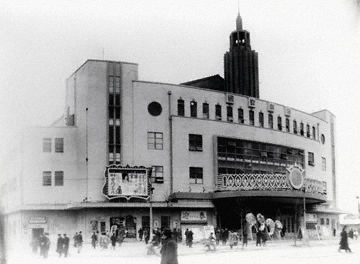 Asakusa Kokusai Theatre
|
| 1940 |
Shinbashi Enbujo Theatre is opened under direct management; the first promotion is with the Soganoya Goro Geki troupe
Eion Kenkyujo Studio is acquired and renamed Shochiku Uzumasa Studio 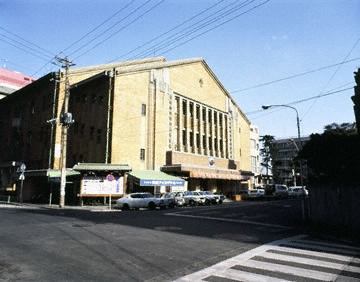 Shinbashi Enbujo Theatre
|
| 1941 | Shochiku Uzumasa Studio is opened |
| 1943 | Shochiku Animation Section is renamed Shochiku Animation Laboratory |
| 1945 |
Kabukiza Theatre and Shinbashi Enbujo Theatre are destroyed by fire in air raids |
| 1948 | Shinbashi Enbujo Theatre is reconstructed and reopened |
| 1949 |
Listed on the Tokyo Stock Exchange, the Osaka Securities Exchange, the Nagoya Stock Exchange, and the Fukuoka Stock Exchange |
| 1928 |
<Kabuki>
The first overseas Kabuki performance (in the Soviet Union by Ichikawa Sadanji and Company)
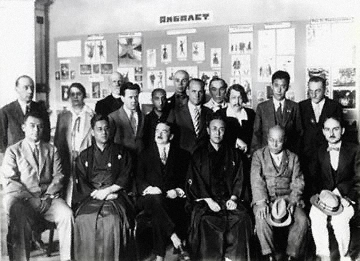 The first overseas Kabuki performance (The third person from the right in the front row is Ichikawa Sadanji II)
|
|---|---|
| 1930 | <Kabuki> |
| 1931 |
<Motion picture>
Japan’s first full-fledged talkie Madamu to Nyobo (The Neighbor’s Wife and Mine, directed by Gosho Heinosuke) is released
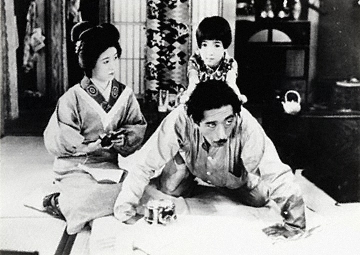 Madamu to Nyobo (The Neighbor’s Wife and Mine, 1931)©️松竹
|
| 1935 | <Kabuki> |
| 1936 | <Kabuki> |
| 1937 | <Theatre> |
| 1938 |
<Motion picture>
Aizen Katsura (Flower in Storm, directed by Nomura Hiromasa) is released and becomes a major hit
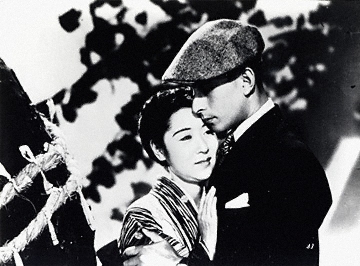 Aizen Katsura (Flower in Storm, 1938)©️松竹
|
| 1940 | <Motion picture> |
| 1942 | <Motion picture> |
| 1943 | <Motion picture> |
| 1945 | <Motion picture> |
| 1947 | <Kabuki> |
| 1948 | <Motion picture> |
| 1949 | <Kabuki> |
| 1950 |
Listed on the Sapporo Securities Exchange |
|---|---|
| 1951 |
The fourth Kabukiza Theatre is reconstructed and reopened after war damage
Kyoto Shimogamo Studio is reduced and the base is moved to Shochiku Uzumasa Studio 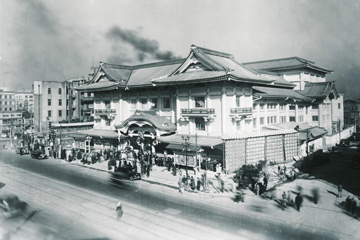 The fourth Kabukiza Theatre
|
| 1952 | Osaka Shochikuza Theatre is reestablished as a movie theatre playing first runs of foreign films |
| 1955 | Chairman Otani Takejiro is awarded an Order of Culture by Japan |
| 1956 |
Shochiku Kaikan construction is completed (at 3-8-6 Tsukiji, Chuo-ku, Tokyo) and the head office is moved 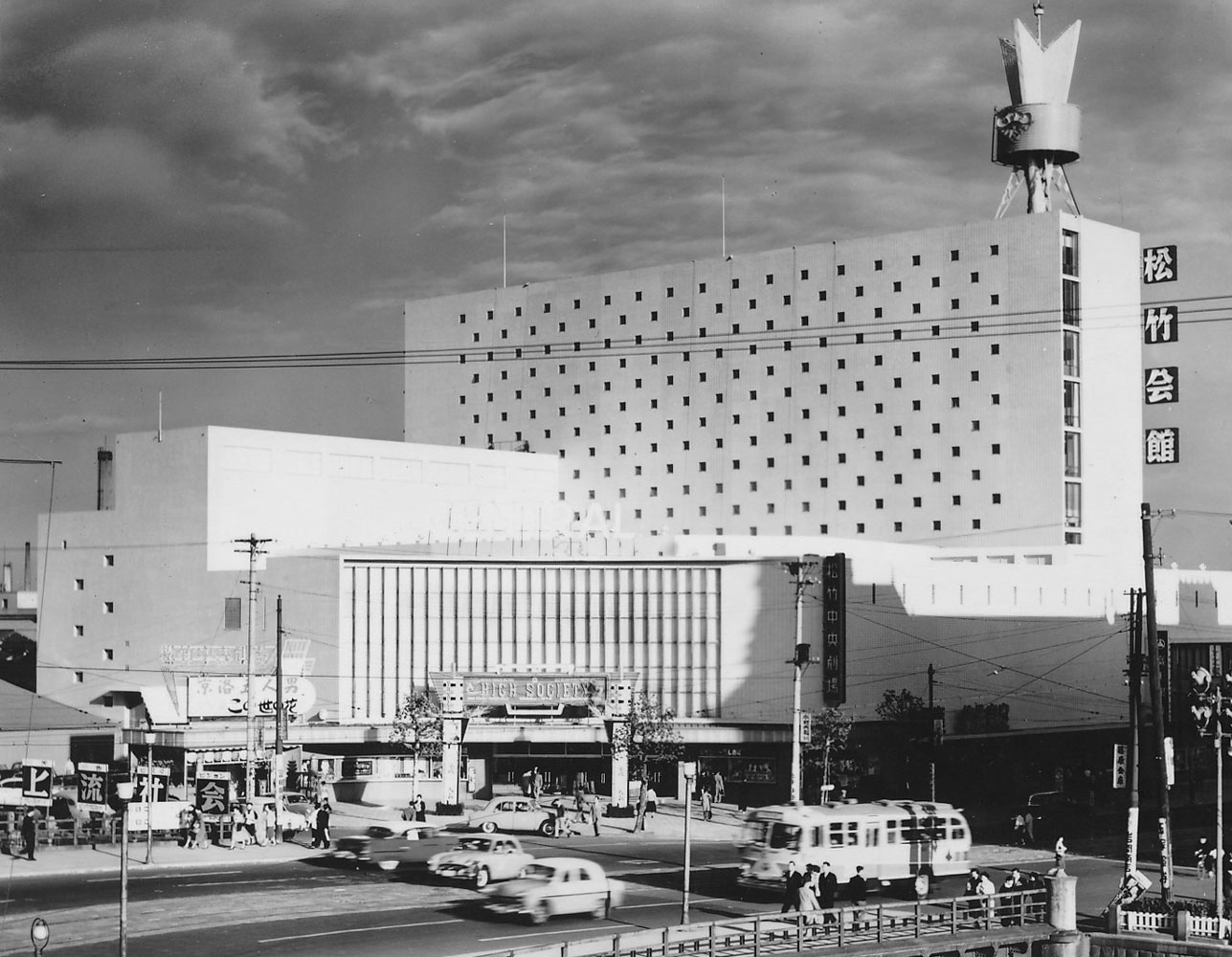 Shochiku Kaikan
|
| 1957 | Shochiku Costume Co., Ltd. is established |
| 1958 |
Incorporated foundation Shochiku Otani Library is opened |
| 1959 |
Television office (now Television Planning Office) is established at the head office to produce dramas for television broadcast |
| 1962 |
Full cooperation with Tokyu in promoting foreign films ST Chain, a motion picture promotion chain of Shochiku and Tokyu, is formed |
| 1963 | Dotonbori Bunrakuza Theatre retreats from management of ningyo-jōruri (traditional puppet plays) |
| 1965 | Chairman Otani Takejiro and President Kido Shiro are awarded the Ordre des Arts et des Lettres (Order of Arts and Letters) by France |
| 1967 | Chairman Otani Takejiro is awarded an Order of the Sacred Treasure, First Class, by Japan |
| 1970 | Nihon Kagekidan is renamed OSK Nihon Kagekidan |
| 1973 | Shochiku Eihai Kabushiki Kaisha is dissolved and Fuji Eiga Kabushiki Kaisha (import and distribution of foreign films) is established |
| 1950 | <Kabuki> |
|---|---|
| 1951 |
<Kabuki> Shūmei-hirō of Kataoka Nizaemon XIII
Shūmei-hirō of Nakamura Utaemon VI 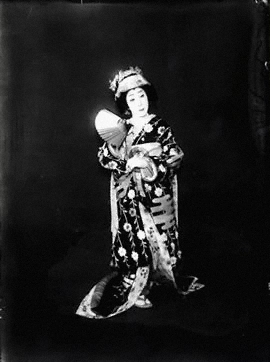 Shūmei-hirō of Nakamura Utaemon VI
<Motion picture>
Karumen Kokyo ni Kaeru (Carmen Comes Home, directed by Kinoshita Keisuke) is released: Japan’s first color work
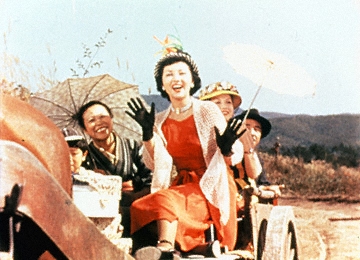 Karumen Kokyo ni Kaeru (Carmen Comes Home, 1951)©️松竹
|
| 1952 | <Kabuki> |
| 1953 |
<Motion picture>
Kimi no Na wa (Always in My Heart, directed by Oba Hideo) is released and becomes a major hit
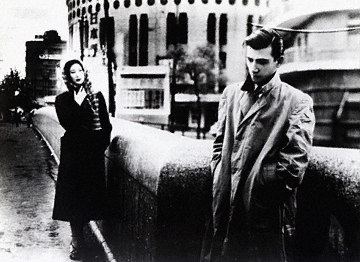 Kimi no Na wa (Always in My Heart, 1953)©️松竹
Tokyo Monogatari (Tokyo Story, directed by Ozu Yasujiro) is released
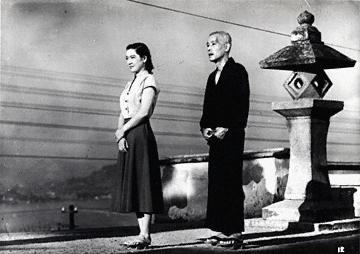 Tokyo Monogatari (Tokyo Story, 1953)©️松竹
<Kabuki> |
| 1954 |
<Motion picture>
Nijushi no Hitomi (Twenty-Four Eyes, directed by Kinoshita Keisuke) is released and becomes a major hit
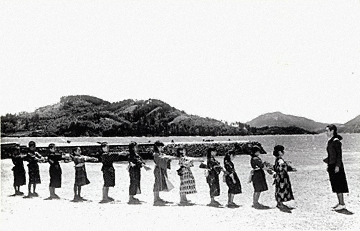 Nijushi no Hitomi (Twenty-Four Eyes, 1954)©️松竹
|
| 1955 | <Motion picture> |
| 1956 | <Motion picture> |
| 1957 | <Motion picture> |
| 1958 | <Motion picture> |
| 1959 | <Motion picture> Ningen no Joken (Human Condition, directed by Kobayashi Masaki) is released (a total of 6 sections are released in 3 parts from 1959 to 1961)
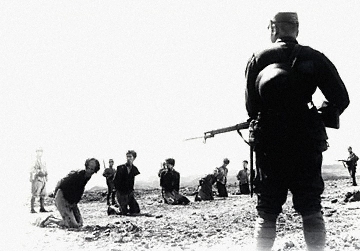 Ningen no Joken (Human Condition, 1959)©️松竹
|
| 1960 |
<Kabuki>
First Kabuki performance in the USA as a part of celebration of the Centennial of the signing of the U.S.-Japan Treaty of Friendship and Amity
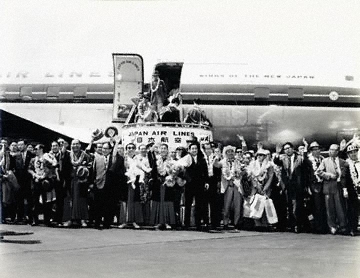 First Kabuki performance in the USA
<Motion picture> |
| 1962 |
<Kabuki>
Shūmei-hirō of Ichikawa Danjuro XI
Shūmei-hirō of Bando Mitsugoro VIII, Bando Minosuke VII, and Bando Yasosuke V 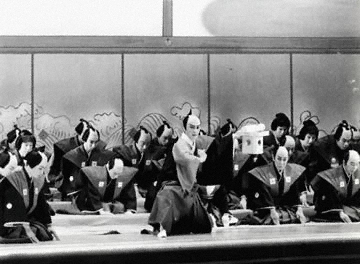 Shūmei-hirō of Ichikawa Danjuro XI
|
| 1963 | <Motion picture> Seppuku (Harakiri, directed by Kobayashi Masaki) is awarded the Prix spécial du Jury (Special Jury Prize) at the Cannes Film Festival
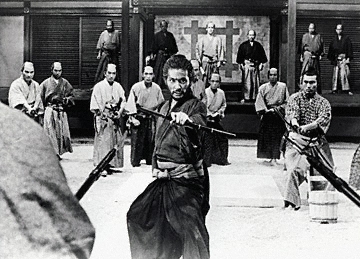 Seppuku (Harakiri, 1962)©️松竹
|
| 1964 | <Motion picture> |
| 1965 | <Kabuki> |
| 1966 | <Kabuki> |
| 1967 | <Kabuki> |
| 1969 |
<Motion picture>
The first in the Otoko wa Tsurai yo (Tora-san) series (directed by Yamada Yoji) is released (a total of 50 have been released in the series as of 2019)
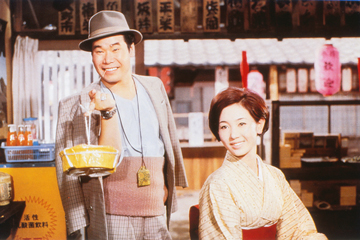 Otoko wa Tsurai yo (Tora-san, 1969)©️松竹
|
| 1971 |
<Theatre>
Shochiku Shinkigeki performs by audience request for the first time
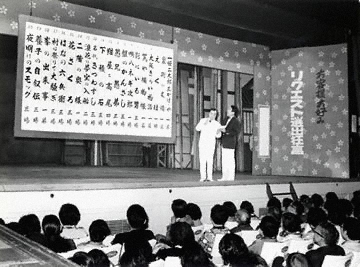 Shochiku Shinkigeki
|
| 1972 |
<Television drama> |
| 1973 |
<Kabuki>
Shūmei-hirō of Onoe Kikugoro VII
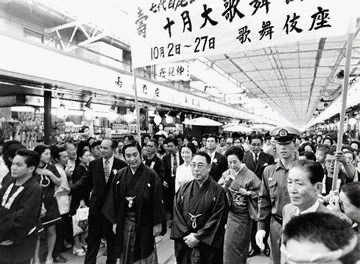 Shūmei-hirō of Onoe Kikugoro VII
|
| 1974 |
<Motion picture>
Suna no Utsuwa (The Castle of Sand, directed by Nomura Yoshitaro) is released and becomes a major hit
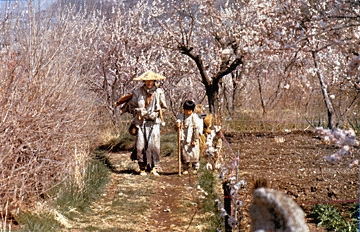 Suna no Utsuwa (The Castle of Sand, 1974)©️松竹・橋本プロ
|
| 1975 |
Shochiku Shimogamo Studio is closed |
|---|---|
| 1976 | Chairman Kido Shiro is awarded an Order of the Sacred Treasure, First Class, by Japan |
| 1979 | Shinbashi Enbujo Theatre is closed |
| 1980 | Umeda Shochiku Kaikan is opened (with 4 theatre screens) |
| 1981 | Shochiku Shopping Center is opened (on the grounds of Ofuna Studio) |
| 1982 | Shinbashi Enbujo Theatre is remodeled and reopened |
| 1983 | Fuji Eiga Kabushiki Kaisha is renamed Shochiku-Fuji Co., Ltd. and handles production and distribution of domestic films in addition to import and distribution of foreign films |
| 1984 | Yurakucho Center Building (Mullion) Phase 1 building is completed, including Marunouchi Piccadilly theatres 1 and 2 |
| 1985 | Kabushiki Kaisha Shochiku Performance is established |
| 1986 | Kadoza Building (Dotonbori, Osaka) is built |
| 1987 | 100 years of shinpa (new school) |
| 1988 |
Kabukiza Theatre celebrates 100 years
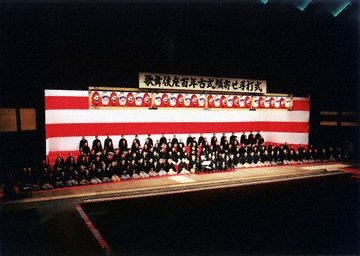 Kabukiza Theatre celebrates 100 years
Shochiku Home Video (SHV) is established |
| 1990 | Ticket Phone Shochiku is established |
| 1991 | Shinsei Shochiku Shinkigeki holds its inaugural performance at the Nakaza Theatre in Osaka |
| 1992 | Shinsei SKD is established |
| 1994 | Osaka Shochikuza Theatre is closed as a movie theatre playing first runs of foreign films |
| 1995 Shochiku celebrates 100 years |
Kamakura Cinema World is opened (on the grounds of Ofuna Studio) |
| 1996 | Shochiku Multiplex Theatres, Ltd. (SMT) is established |
| 1997 | Osaka Shochikuza Theatre is newly built and opened |
| 1998 | Kamakura Cinema World is closed |
| 1999 |
Chairman Nagayama Takeomi is bestowed the Légion d’honneur (Legion of Honour) of the class Chevalier (Knight) by France
Stores in the restaurant business are started Shochiku-Fuji Co., Ltd. is dissolved Nakaza Theatre in Osaka is closed All cooperating theatres in the nationwide Shochiku movie theatre network had been required by Shochiku to show only Shochiku-distributed domestic films at all times; this requirement is abolished in favor of open booking 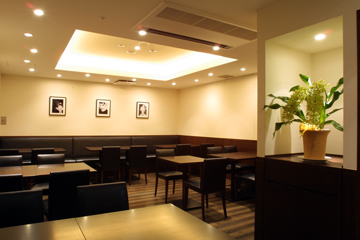 The restaurant business (tsukiji kitchen)
|
| 1977 |
<Motion picture>
Yatsuhaka-mura (Village of Eight Gravestones, directed by Nomura Yoshitaro) is released and becomes a major hit along with Yokomizo Seishi, the author of the novel it was adapted from
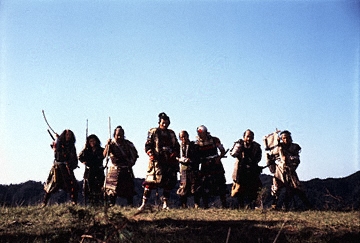 Yatsuhaka-mura (Village of Eight Gravestones, 1977)©️松竹
|
|---|---|
| 1978 | <Motion picture>
The Japan Academy Film Prize is established, and Shiawase no Kiiroi Hankachi (The Yellow Handkerchief) is awarded the first Best Film and other awards
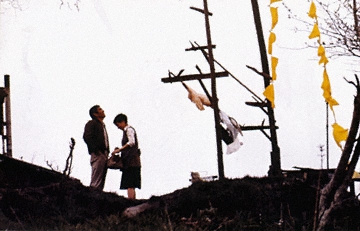 Shiawase no Kiiroi Hankachi (The Yellow Handkerchief, 1977)©️松竹
|
| 1980 | <Kabuki> |
| 1981 |
<Kabuki>
Shūmei-hirō (succession announcement performance) of Matsumoto Hakuo I, Matsumoto Koshiro IX, and Ichikawa Somegoro VII
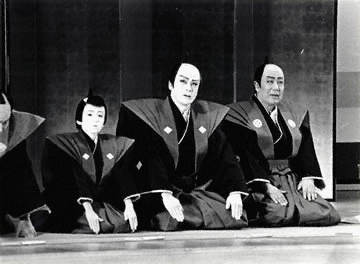 Ichikawa Somegoro VII, Matsumoto Koshiro IX, and Matsumoto Hakuo I
|
| 1982 |
<Motion picture> |
| 1983 |
<Motion picture> |
| 1985 |
<Kabuki>
Shūmei-hirō of Ichikawa Danjuro XII
The first Shikoku Konpira Kabuki Oshibai is held at the Kyu Konpira Oshibai grand theatre (Kanamaruza) in Kagawa 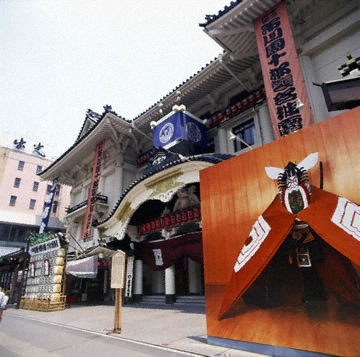 Shūmei-hirō of Ichikawa Danjuro XII
<Motion picture> |
| 1986 |
<Kabuki>
Yamato Takeru, the first Super Kabuki, is performed for a long run of 2 months
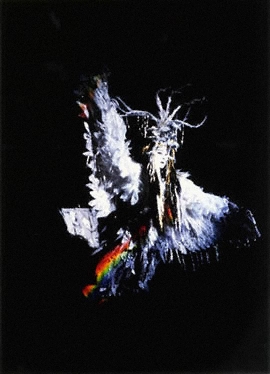 Yamato Takeru, the first Super Kabuki
<Motion picture> |
| 1987 |
<Theatre>
Special program commemorating 100 years of shinpa
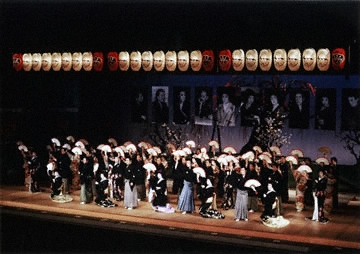 Special program commemorating 100 years of shinpa
<Motion picture> |
| 1988 |
<Kabuki> The first in the Tsuribaka Nisshi (Free and Easy) series is released (a total of 22 have been released in the series as of 2009)
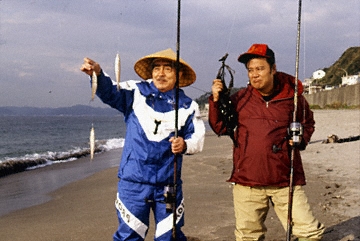 Tsuribaka Nisshi (Free and Easy, 1988)©️松竹
|
| 1989 | <Television drama> |
| 1990 | <Motion picture> |
| 1992 | <Kabuki> |
| 1993 |
<Motion picture> |
| 1994 |
<Kabuki> |
| 1997 | <Motion picture> |
| 1998 |
<Kabuki> |
| 2000 | Ofuna Studio is closed and Kabushiki Kaisha Ofuna Studio is dissolved |
|---|---|
| 2001 | Movix Kyoto is opened |
| 2002 |
Shochiku Jigyo Kabushiki Kaisha is renamed Shochiku Service Network Co., Ltd. |
| 2003 | OSK Nihon Kagekidan is dissolved |
| 2004 |
Revived as New OSK Nihon Kagekidan |
| 2005 |
Asahi Kaisetsu Jigyo Co., Ltd. renamed Earphone Guide Co., Ltd. |
| 2006 | Shinjuku Piccadilly is closed for reconstruction |
| 2007 | Nagoya Midland Square Cinema (a joint venture) is opened |
| 2008 |
Kabukiza Theatre celebrates 120 years
Shinjuku Piccadilly is opened
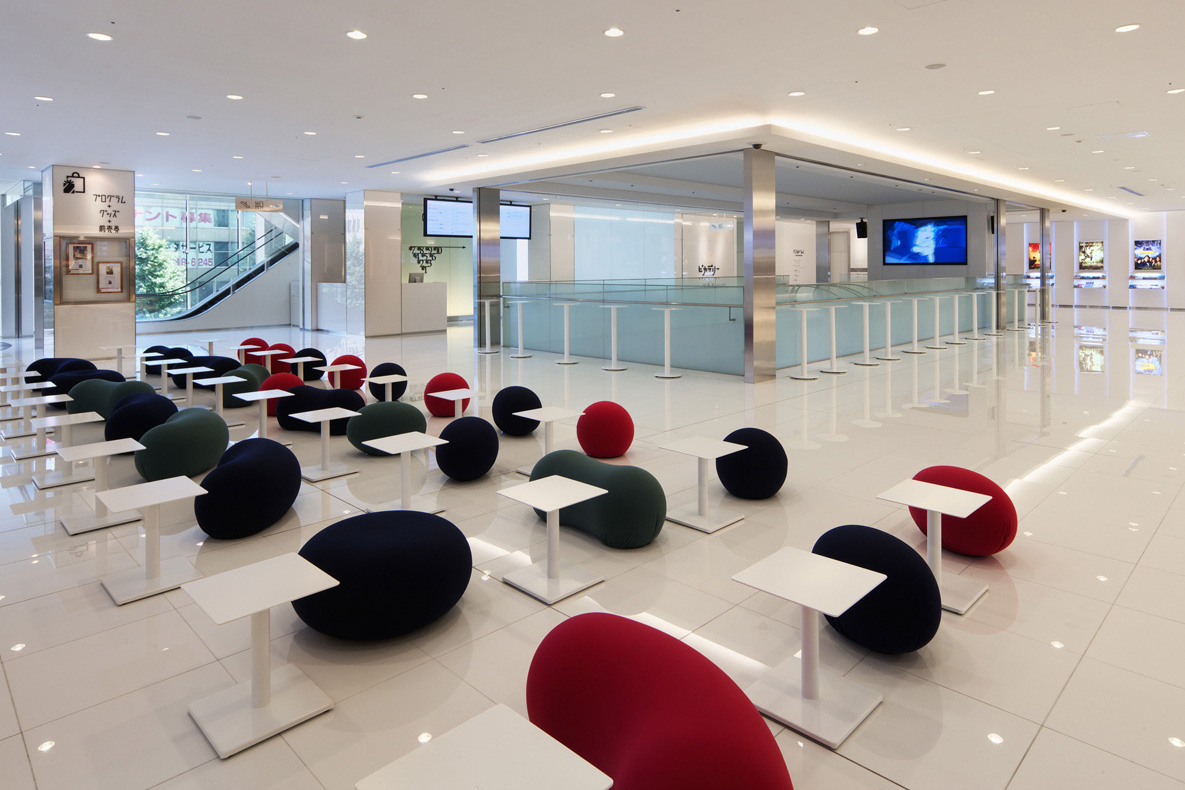 Shinjuku Piccadilly
Shochiku Kyoto Studio Co., Ltd. is established |
| 2009 |
OSK Nippon Revue Company is established |
| 2010 | The fourth Kabukiza Theatre is closed for reconstruction |
| 2011 | Osaka Station City Cinema (a joint venture) is opened |
| 2013 |
The fifth Kabukiza Theatre is reopened
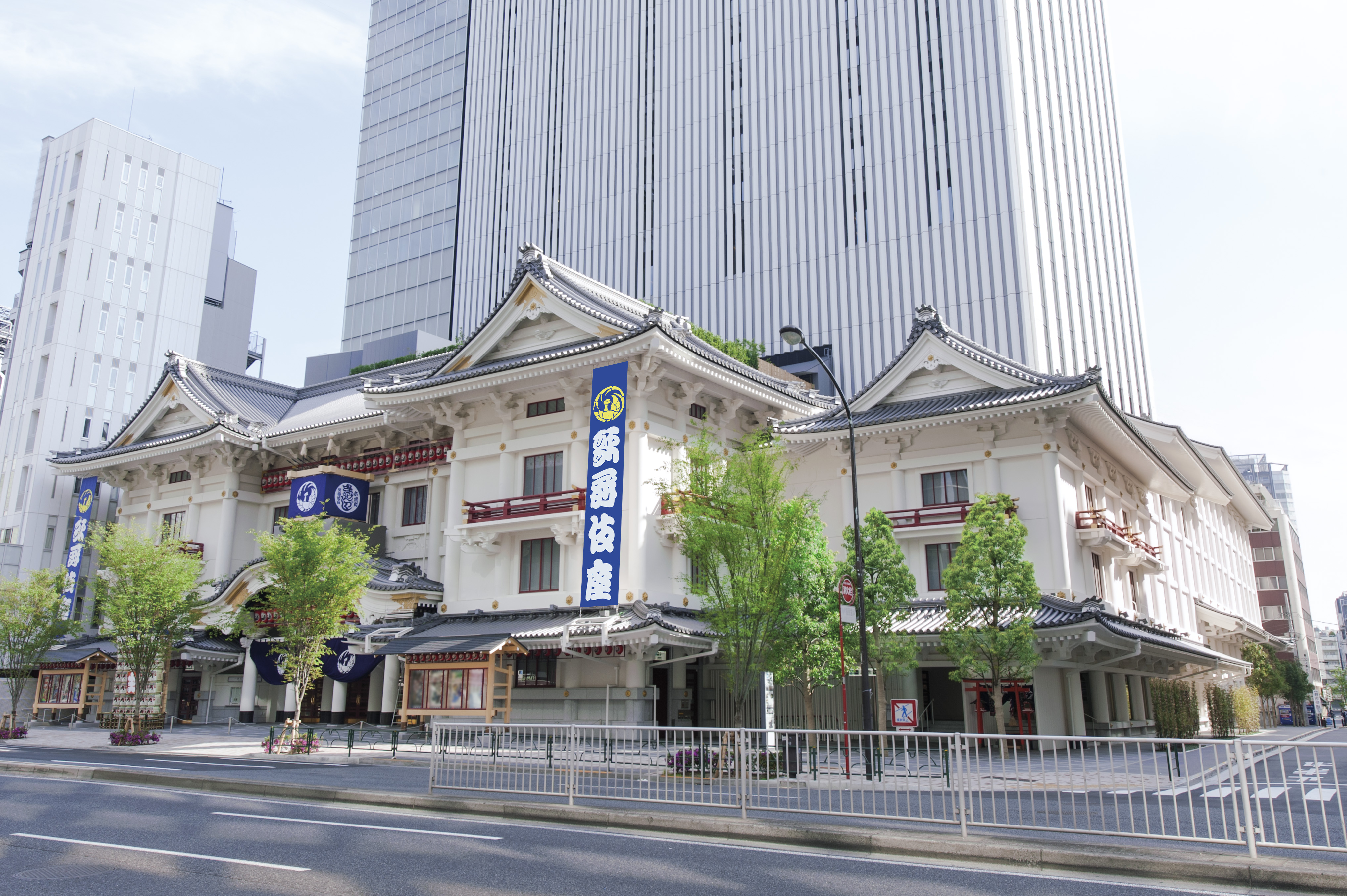 The fifth Kabukiza Theatre
Kabukiza Gallery is opened
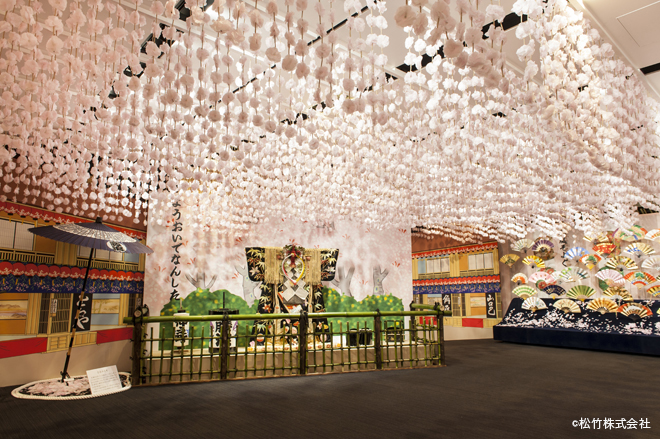 Kabukiza Gallery
GINZA KABUKIZA is built |
| 2014 | Shochiku MediaWorX consolidates the post production base in Daiba |
| 2015 | SHOCHIKU NAVI Inc. is established |
| 2016 | Minamiza Theatre closes for seismic retrofit |
| 2018 | Miecle Inc. is established |
| 2019 | The Tora-san series 50th anniversary |
| 2000 |
<Kabuki> |
|---|---|
| 2001 |
<Kabuki> |
| 2002 |
<Kabuki> |
| 2003 |
<Kabuki> |
| 2005 |
<Other> |
| 2006 |
<Kabuki> |
| 2008 |
<Motion picture> |
| 2009 |
<Kabuki> |
| 2012 |
<Kabuki> |
| 2013 |
<Motion picture> |
| 2014 |
<Motion picture> |
| 2015 |
<Kabuki> |
| 2016 |
<Motion picture> |
| 2018 |
<Kabuki> |
